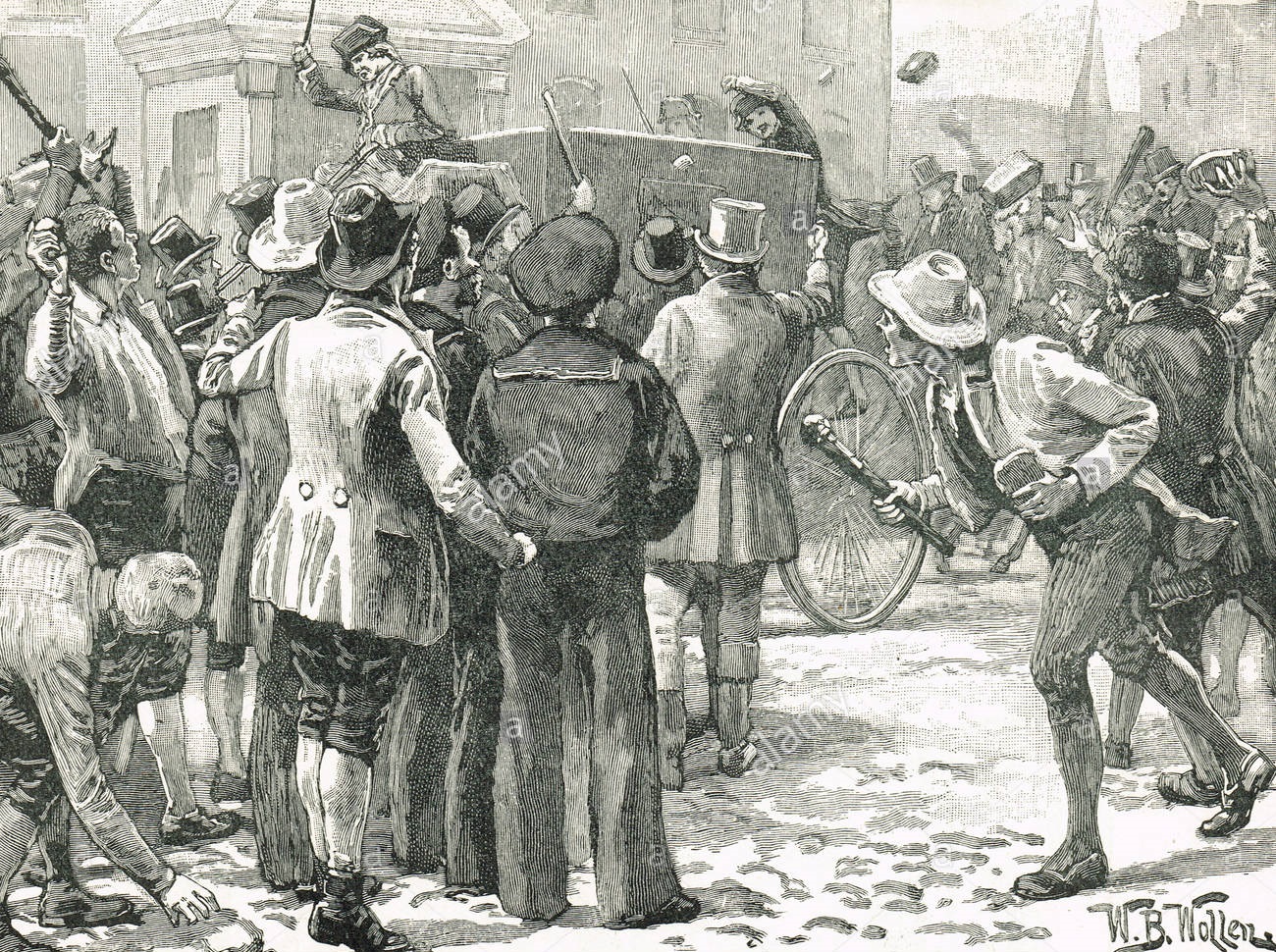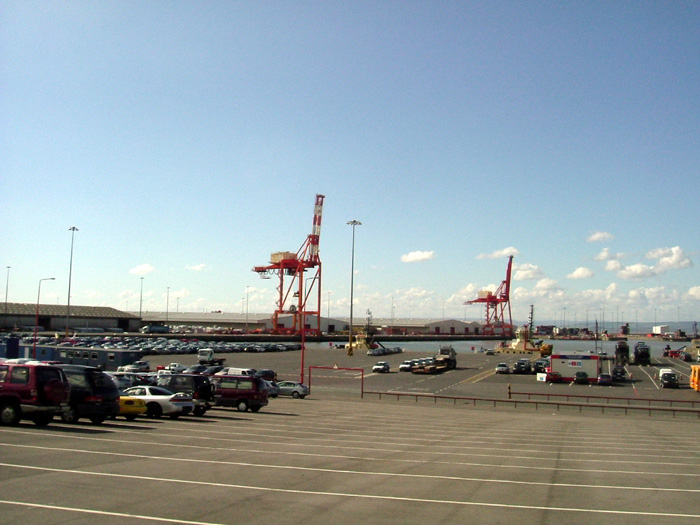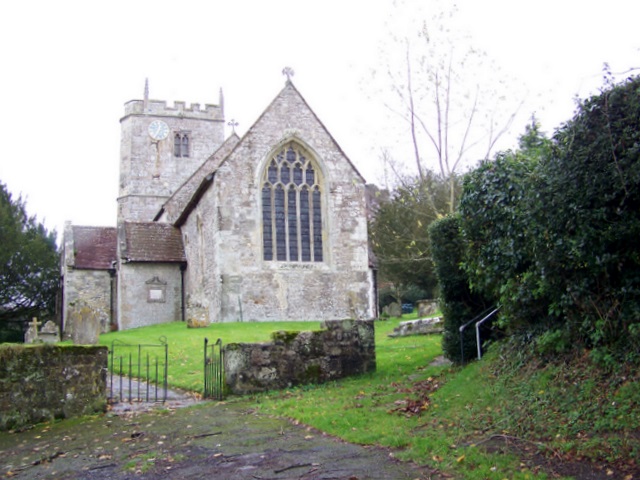|
Charles Pinney
Charles Pinney (29 April 179317 July 1867) was a British merchant and local politician in Bristol, England. He was a partner in a family business that ran sugar plantations in the West Indies and owned a number of slaves. Pinney was selected as mayor of Bristol in 1831 and within weeks had to manage the response to major riots. Public order was lost for a number of days and significant damage caused to the city centre. Pinney was charged with neglect of duty over his actions but was acquitted at trial. He returned to local government as an alderman, holding the position until 1853. Early life and career Charles Pinney was the youngest son of John Pretor Pinney and his wife Jane (née Weekes), sugar planters and traders in Nevis, West Indies. Charles was born on 29 April 1793, after the couple returned to England and settled at 7 Great George Street in Bristol. Charles took over the running of his father's business, in partnership with Robert Edward Case, which included the o ... [...More Info...] [...Related Items...] OR: [Wikipedia] [Google] [Baidu] |
Mayor Of Bristol
The Mayor of Bristol is the head of government of Bristol and the chief executive of the Bristol City Council. The mayor is a directly elected politician who, along with the 70 members of Bristol City Council, is responsible for the strategic government of the city of Bristol, England. The role was created after a local referendum held on 3 May 2012, which followed the passage of the Localism Act 2011. 41,032 voted for an elected mayor and 35,880 voted against, with a turnout of 24%. An election for the new post was held on 15 November 2012. The current mayor is Marvin Rees, elected on 5 May 2016. The post of Lord Mayor of Bristol is a separate office, elected each May by city councillors and taking office on 29 September for a one-year period. The Lord Mayor chairs Council meetings and performs ceremonial functions in the city. On 7 December 2021, Bristol City Council voted in favour of holding another referendum on the position of mayor in May 2022, with regards to whether ... [...More Info...] [...Related Items...] OR: [Wikipedia] [Google] [Baidu] |
Bishop Of Bath And Wells
The Bishop of Bath and Wells heads the Church of England Diocese of Bath and Wells in the Province of Canterbury in England. The present diocese covers the overwhelmingly greater part of the (ceremonial) county of Somerset and a small area of Dorset. The Episcopal seat is located in the Cathedral Church of Saint Andrew in the city of Wells in Somerset. The bishop is one of two (the other is the Bishop of Durham) who escort the sovereign at the coronation. The Bishop's residence is The Palace, Wells. In late 2013 the Church Commissioners announced that they were purchasing the Old Rectory, a Grade II-listed building in Croscombe for the Bishop's residence. However this decision was widely opposed, including by the Diocese, and in May 2014 was overturned by a committee of the Archbishops' Council. History Somerset originally came under the authority of the Bishop of Sherborne, but Wells became the seat of its own Bishop of Wells from 909. King William Rufus granted Bath to a r ... [...More Info...] [...Related Items...] OR: [Wikipedia] [Google] [Baidu] |
Whig (British Political Party) Politicians
Whig or Whigs may refer to: Parties and factions In the British Isles * Whigs (British political party), one of two political parties in England, Great Britain, Ireland, and later the United Kingdom, from the 17th to 19th centuries ** Whiggism, the political philosophy of the British Whig party ** Radical Whigs, a faction of British Whigs associated with the American Revolution ** Patriot Whigs or Patriot Party, a Whig faction * A nickname for the Liberal Party, the UK political party that succeeded the Whigs in the 1840s * The Whig Party, a supposed revival of the historical Whig party, launched in 2014 * Whig government, a list of British Whig governments * Whig history, the Whig philosophy of history * A pejorative nickname for the Kirk Party, a radical Presbyterian faction of the Scottish Covenanters during the 17th-century Wars of the Three Kingdoms ** Whiggamore Raid, a march on Edinburgh by supporters of the Kirk faction in September 1648 In the United States * A term ... [...More Info...] [...Related Items...] OR: [Wikipedia] [Google] [Baidu] |
1867 Deaths
Events January–March * January 1 – The John A. Roebling Suspension Bridge, Covington–Cincinnati Suspension Bridge opens between Cincinnati, Ohio, and Covington, Kentucky, in the United States, becoming the longest single-span bridge in the world. It was renamed after its designer, John A. Roebling, in 1983. * January 8 – African-American men are granted the right to vote in the District of Columbia. * January 11 – Benito Juárez becomes Mexican president again. * January 30 – Emperor Kōmei of Japan dies suddenly, age 36, leaving his 14-year-old son to succeed as Emperor Meiji. * January 31 – Maronite nationalist leader Youssef Bey Karam leaves Lebanon aboard a French ship for Algeria. * February 3 – ''Shōgun'' Tokugawa Yoshinobu abdicates, and the late Emperor Kōmei's son, Prince Mutsuhito, becomes Emperor Meiji of Japan in a brief ceremony in Kyoto, ending the Late Tokugawa shogunate. * February 7 – West Virginia University is established in Morgan ... [...More Info...] [...Related Items...] OR: [Wikipedia] [Google] [Baidu] |
1793 Births
The French Republic introduced the French Revolutionary Calendar starting with the year I. Events January–June * January 7 – The Ebel riot occurs in Sweden. * January 9 – Jean-Pierre Blanchard becomes the first to fly in a gas balloon in the United States. * January 13 – Nicolas Jean Hugon de Bassville, a representative of Revolutionary France, is lynched by a mob in Rome. * January 21 – French Revolution: After being found guilty of treason by the French National Convention, ''Citizen Capet'', Louis XVI of France, is guillotined in Paris. * January 23 – Second Partition of Poland: The Russian Empire and the Kingdom of Prussia partition the Polish–Lithuanian Commonwealth. * February – In Manchester, Vermont, the wife of a captain falls ill, probably with tuberculosis. Some locals believe that the cause of her illness is that a demon vampire is sucking her blood. As a cure, Timothy Mead burns the heart of a deceased person in ... [...More Info...] [...Related Items...] OR: [Wikipedia] [Google] [Baidu] |
Wiltshire
Wiltshire (; abbreviated Wilts) is a historic and ceremonial county in South West England with an area of . It is landlocked and borders the counties of Dorset to the southwest, Somerset to the west, Hampshire to the southeast, Gloucestershire to the north, Oxfordshire to the northeast and Berkshire to the east. The county town was originally Wilton, after which the county is named, but Wiltshire Council is now based in the county town of Trowbridge. Within the county's boundary are two unitary authority areas, Wiltshire and Swindon, governed respectively by Wiltshire Council and Swindon Borough Council. Wiltshire is characterised by its high downland and wide valleys. Salisbury Plain is noted for being the location of the Stonehenge and Avebury stone circles (which together are a UNESCO Cultural and World Heritage site) and other ancient landmarks, and as a training area for the British Army. The city of Salisbury is notable for its medieval cathedral. Swindon is the ... [...More Info...] [...Related Items...] OR: [Wikipedia] [Google] [Baidu] |
East Knoyle
East Knoyle is a village and Civil parishes in England, civil parish in Wiltshire, in the south-west of England, just west of the A350 road, A350 and about south of Warminster and north of Shaftesbury, Dorset. It was the birthplace of the architect Christopher Wren, Sir Christopher Wren. The parish includes the hamlets of Holloway, Milton, The Green, Underhill and Upton. History East Knoyle was part of the ancient Hundred (country subdivision), Hundred of Downton, Wiltshire, Downton. Unusually for England, parish registers survive from 1538 and are kept in the Wiltshire and Swindon History Centre.East Knoyle, Wiltshire, England at genuki.org.uk John Marius Wilson's ''Imperial Gazetteer of England and Wales'' (1870–1872) notes two Tithing (country subdivision), tythings in East Knoyle: Milton and Upton. East ... [...More Info...] [...Related Items...] OR: [Wikipedia] [Google] [Baidu] |
William Wilberforce
William Wilberforce (24 August 175929 July 1833) was a British politician, philanthropist and leader of the movement to abolish the slave trade. A native of Kingston upon Hull, Yorkshire, he began his political career in 1780, eventually becoming an independent Member of Parliament (MP) for Yorkshire (1784–1812). In 1785, he became an evangelical Christian, which resulted in major changes to his lifestyle and a lifelong concern for reform. In 1787, Wilberforce came into contact with Thomas Clarkson and a group of activists against the slave trade, including Granville Sharp, Hannah More and Charles Middleton. They persuaded Wilberforce to take on the cause of abolition, and he soon became the leading English abolitionist. He headed the parliamentary campaign against the British Slave Trade for 20 years until the passage of the Slave Trade Act of 1807. Wilberforce was convinced of the importance of religion, morality and education. He championed causes and campaigns such as t ... [...More Info...] [...Related Items...] OR: [Wikipedia] [Google] [Baidu] |
Engineers House
The Engineers House is a historic building, previously known as Camp House, on The Promenade, Clifton Down, Bristol, England. It has been designated as a Grade II* listed building. It was built in 1831 by Charles Dyer for Charles Pinney, who became mayor of Bristol, serving during the Reform Bill riots of 1831. The neoclassical two-storey limestone building has a symmetrical front in the centre of which is a pedimented portico with tuscan on ionic columns with a balcony above. It is now used as offices, a training centre and a conference venue. In 2015 it achieved a green charter mark for the way in which energy and waste are managed to reduce the carbon footprint of the building. Early residents Charles Pinney (1793-1867) built Engineers House in 1831 shortly after his marriage. He was born in 1793 in Clifton, Bristol. His father was John Preter who had adopted the name Pinney when he inherited their numerous estates. Charles became a merchant and in 1831 was elected a ... [...More Info...] [...Related Items...] OR: [Wikipedia] [Google] [Baidu] |
Clifton Down
Clifton Down is an area of public open space in Bristol, England, north of the village of Clifton. With its neighbour Durdham Down to the northeast, it constitutes the large area known as The Downs, much used for leisure including walking and team sports. Clifton Down is the part of the Downs south of Stoke Road. History There is an Iron Age hill fort at Clifton Camp on Observatory Hill on the down, and there are remnants of an Iron Age or Roman field system between Ladies Mile and Bristol Zoo. The Roman road from Bath to Sea Mills crossed the Downs near Stoke Road, and a short length is visible as a slightly raised grassy bank. William Worcester described a presumably turf-cut figure of the giant Ghyst on Clifton Down in 1480. In the Middle Ages Clifton Down was the commons of pasture for the manor of Clifton. It was also valuable farmland used by many farms in the area. In 1676 and 1686 the manor of Clifton was purchased by the Society of Merchant Venturers. During ... [...More Info...] [...Related Items...] OR: [Wikipedia] [Google] [Baidu] |
Society Of Merchant Venturers
The Society of Merchant Venturers is a charitable organisation in the English city of Bristol. The society can be traced back to a 13th-century guild which funded the voyage of John Cabot to Canada. In 1552, it gained a monopoly on sea trading from Bristol from its first royal charter. For centuries it had almost been synonymous with the government of Bristol, especially Bristol Harbour. In recent times, the society's activities have centred on charitable agendas. The society played a part in the development of Bristol, including the building of Clifton Suspension Bridge and the Great Western Railway. It also influenced the development of educational institutions in Greater Bristol, including University of Bristol, University of the West of England, University of Bath, City of Bristol College, Merchants' Academy, Montpelier High School and Wells Cathedral School. History A Guild of Merchants was founded in Bristol by the 13th century, and swiftly became active in civic lif ... [...More Info...] [...Related Items...] OR: [Wikipedia] [Google] [Baidu] |
Slavery Abolition Act 1833
The Slavery Abolition Act 1833 (3 & 4 Will. IV c. 73) was an Act of the Parliament of the United Kingdom which provided for the gradual abolition of slavery in most parts of the British Empire. It was passed by Earl Grey's reforming administration and expanded the jurisdiction of the Slave Trade Act 1807 and made the purchase or ownership of slaves illegal within the British Empire, with the exception of "the Territories in the Possession of the East India Company", Ceylon (now Sri Lanka), and Saint Helena. The Act was repealed in 1998 as a part of wider rationalisation of English statute law; however, later anti-slavery legislation remains in force. Background It is important to note the long history of efforts to end or limit the practice of slavery. In 1080, William the Conqueror banned the slave trade between Bristol and Ireland upon the urging of Bishop Wulfstan of Worcester. In 1102, the ecclesiastical Council of London condemned the slave trade within England, decreeing â ... [...More Info...] [...Related Items...] OR: [Wikipedia] [Google] [Baidu] |









